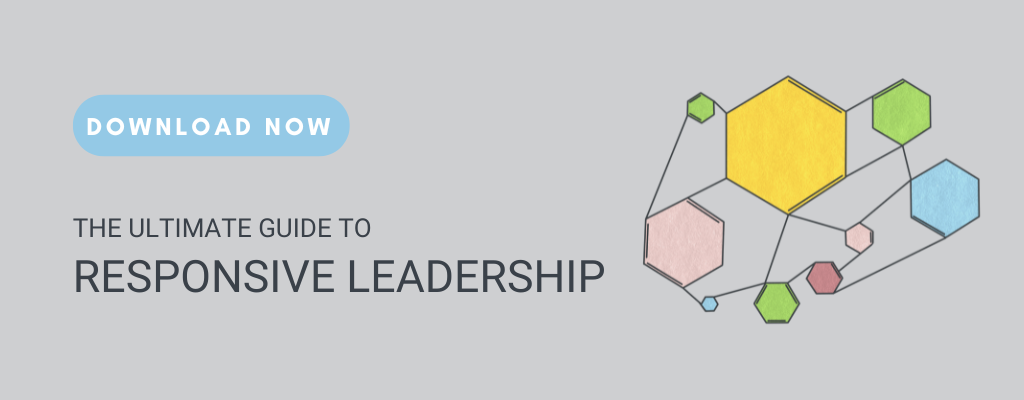why is change so hard? navigating change in schools isn't just a leadership challenge—it's a personal journey for every educator and administrator involved. educators often find themselves adapting to new standards, implementing new initiatives, or integrating innovative tech, which can feel like steering a ship through stormy seas. in this blog, we will dive into some of the reasons why people and organizations are resistant to change and what we can do to effectively manage large-scale change to achieve our goals.
learning anxiety is an obstacle to change
what is learning anxiety? diane coutu defines learning anxiety as coming from a feeling of "being afraid to try something new for fear that it will be too difficult, that we will look stupid in the attempt, or that we will have to part from old habits that have worked for us in the past. learning something new can cast us as the deviant in the groups we belong to. it can threaten our self-esteem and, in extreme cases, even our identity." as leaders, you may experience anxiety about how to implement change on your campuses - and this feeling is quite normal!
author nassim taleb, an economist and statistician, investigates problems of randomness and uncertainty. his book, antifragile, reveals how some systems can thrive from shocks, volatility, and uncertainty while others crumble. his arguments help us overcome our learning anxiety and allow us to manage change with confidence by becoming an antifragile organization.
 figure 1: how change manifests for individuals
figure 1: how change manifests for individuals
types of organizations facing change
- in a fragile organization, the organization has more to lose than gain. what happens when the wind blows? we are exposed to volatility and we tend to curl up in a ball and ignore the uncertainty.
- in a robust organization, the organization plans for as many potential scenarios as possible. what happens when the wind blows? we resist volatility and tend to construct a wall to shield us from the uncertainty of change.
- in an antifragile organization, the organization has more to gain than lose and we welcome volatility. what happens when the wind blows? we tend to build a windmill so we are flexible and open to the uncertainty of change, knowing we are capable of managing it.
becoming an antifragile district
how can we work to become an antifragile organization that is open to change and can manage it well? how can we implement changes more effectively? we can focus on building antifragile school organizations.there are several key strategies we can implement to build these muscles:
invest in the right things
in your role as leader, be thoughtful in where you invest funds. consider the lindy effect, which states “the longer it’s been around, the longer it will persist” when investing in new technologies, strategies, or initiatives. or expressed as "things that have stood the 'test of time' are things that you can rely on."
 figure 2: the lindy effect
figure 2: the lindy effect
this analysis will improve your roi and increase your chances of creating buy-in amongst your teams by not always proposing the newest and flashiest options for investment.
- try this: reflect on new initiatives by asking, “what opportunities does this new initiative afford us?”
- note: not all solutions are right and not all of the right solutions are right for us.

minimize downside
in your role as a leader, look for ways to limit the downside as you embark on new initiatives and execute your vision.
- try this: leverage our negative knowledge (what doesn’t work) of past initiatives. this preserves space for innovation and encourages authentic collaboration.
- note: as you ‘iron out’ potential pitfalls beware of also ironing out potential peaks.
embrace randomness
in your role as a leader, intentionally plan for randomness by creating space for collaboration and writing loose and not prescriptive plans.
- try this: clearly communicate the initiatives’ fixed and loose guardrails. this ensures that people feel empowered to use the implementation of the initiative to address their personalized needs.
- note: like our students, adults each need different supports. some people will need more guidance while others will benefit from more freedom.
example: in personalized learning implementation we often guide districts through a capstone / prototype process in which teachers are able to apply the theory in their own spaces. we bring all of the participants together to showcase their work. this celebrates their effort and infuses a sense of innovation into the organization.
make time for recovery
in your role as a leader, remember that support must come before accountability. as leaders, we must communicate clearly about what success looks like (not the data but the learning).
- try this: create space for people to process the realities of implementation.
- note: engage all voices!
create buy-in
in your role as a leader, develop a vision for what the success of an initiative will look like. this vision should not just include the end of the road, but the road to get there as well
- try this: consider the law of diffusion of innovation to identify stakeholders to create meaningful growth. this will create valuable buy-in at the beginning of an initiative (at its most fragile.) focus on momentum as a success metric.
- note: even if people aren’t directly involved in implementation, they should be involved in the communication strategy
by taking the steps above to be a thoughtful leader in implementing change, you will have a better chance of success in achieving your vision for school improvement and transformation. as you build an antifragile organization, you will see its benefits as you can manage change more effectively, build on success, and create an innovative and engaging learning environment for all students.
